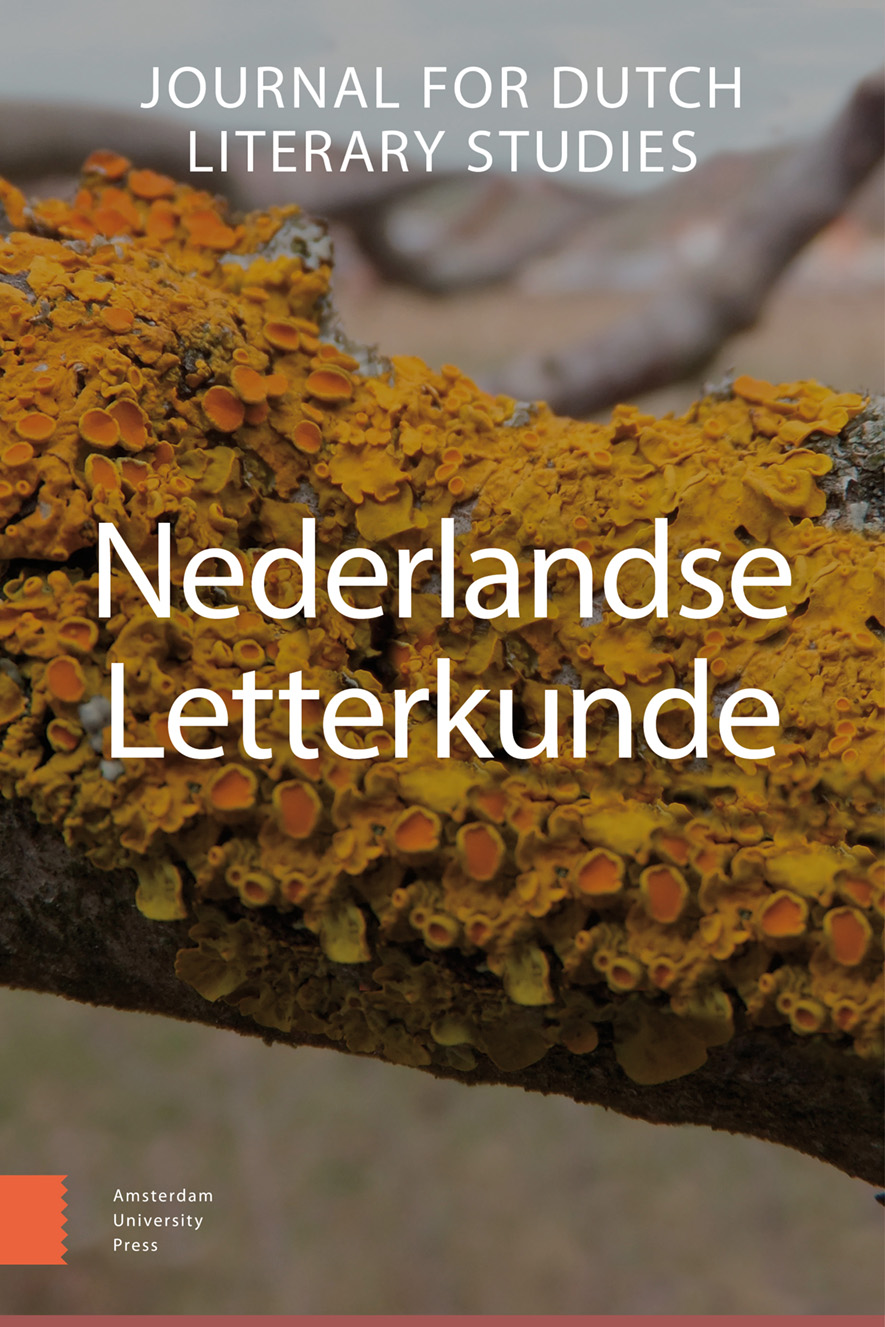- Home
- A-Z Publications
- Nederlandse Letterkunde
- Previous Issues
- Volume 19, Issue 1, 2014
Nederlandse Letterkunde - Volume 19, Issue 1, 2014
Volume 19, Issue 1, 2014
Language:
English
-
-
De mythe van de dichter - Willem Bilderdijks beroemdheidscultus
More LessBy Rick HoningsBy Dutch literary scholars Willem Bilderdijk is often represented as an unhappy man with a miserable life, full of poverty, illness and underestimation. He is, indeed, famous for his endless complaining and his burning desire for death. There were good reasons for him to be unhappy: he was often ill, lived in exile, suffered the loss of children and had the constant feeling he couldn’t find his way in life. In spite Read More
-
-
-
Bedrieglijk betoog - Auteursintentie en interpretatie van Hermans’ ‘Preambule’
More LessWillem Frederik Hermans’s second collection of short stories, Paranoia (1953), opens with a short prose piece entitled ‘Preambule’ that for decades has been regarded as an introductory essay to the book. The italicized sentence ‘There is only one real word: chaos’ has often been understood as summary of the author’s own epistemological views. However, Hermans himself always insisted that ‘Preambule’ was a story; but the a Read More
-
-
-
‘[H]et dier in al zijn toonaarden’ - Over zoöpoëticale configuraties in Charlotte Mutsaers’ beeldend en literair werk
More LessThis article aims to highlight the prominent place and role of the animal in the literary and visual work of the Dutch writer and artist Charlotte Mutsaers (1942-). The border-crossing between human and animal will be dealt with on the basis of the interaction between image and text in Mutsaers’s oeuvre. In this intermedial perspective, I first focus on three images of Mutsaers’s visual work exemplifying the human-anim Read More
-
-
-
Boekbespreking - Peter Liebregts, Olf Praamstra, Wium van Zyl (red.), Zo ver & zo dichtbij. Literaire betrekkingen tussen Nederland en Zuid-Afrika. Voor Eep Francken. Aangeboden bij zijn afscheid aan de Opleiding Nederlandse Taal en cultuur van de Universiteit Leiden. Amsterdam (Suid-Afrikaanse Instituut) 2013, 325 blz. SAI-reeks, deel 13. ISBN 978-90-74112-00-0. Euro 24,50. Het boek is te verkrijgen op het secretariaat van het Zuid-Afrika-Huis, Keizersgracht 141 te Amsterdam.
More LessBy Hans Ester
-
Volumes & issues
Most Read This Month
Article
content/journals/13845829
Journal
10
5
false
en


